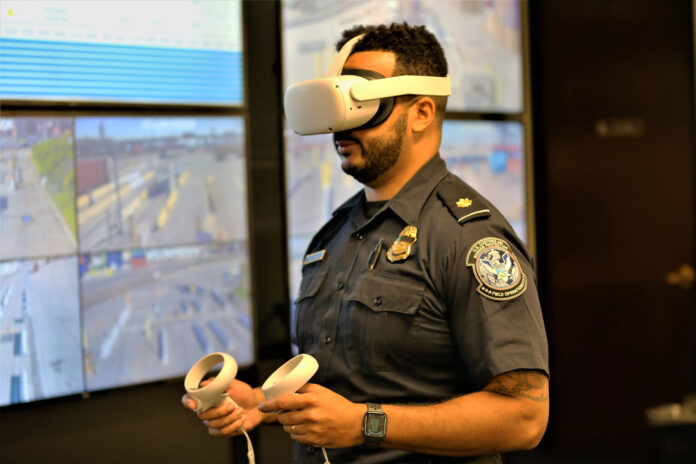
U.S. Customs and Border Protection (CBP) Los Angeles/Long Beach (LA/LB) Seaport handles between 35%-40% of the nation’s inbound maritime cargo, with approximately 5.7 million containers arriving annually. Each year, more than 3,500 vessels and 1.2 million passengers and crew arrive at the seaport, and each day, CBP officers and agriculture specialists are tasked with ensuring that all maritime cargo passing through the LA/LB Seaport is safe and legal for use by American consumers under the SAFE Port Act.
CBP’s Office of Field Operations (OFO) has leveraged the use of immersive technology to address challenges associated with the massive volume of cargo, working with the Science and Technology Directorate (S&T) to develop a command center designed to increase domain awareness within the LA/LB Seaport.
Led by CBP LA/LB Seaport Port Director Donald R. Kusser and Command Center Chief Victor Todorov, a Community of Interest (COI) was initiated to gain support for this project. The COI includes S&T, its National Labs, and the Awareness and Localization of Explosives-Related Threats (ALERT) Center of Excellence. S&T CBP Portfolio Manager David Taylor and Dr. Syed Mohammad, Director of S&T’s Modeling and Simulation Tech Center (MS-TC), worked rapidly to assess requirements and paths forward for the project. The S&T team focused on providing visualization to the LA/LB Command Center and delivered a 1:1 virtual scale model facility planner application to operators in just under two months.
During a demonstration of the facility planner, CBP employees were impressed by the user-friendly interface, adjustability, and the highly depicted virtual model. The model can work in two ways: a 1:1 replica that can be detailed down to the air ducts and wiring in the walls or built manually based on rough estimates provided by those on the ground—even exact blueprints in LA/LBCC’s case.
The mobility and ease of using the virtual reality (VR) headset assisted CBP OFO project managers in providing virtual demonstrations of the space for senior leadership to experience. This technology assists CBP employees in visualizing the floor within a three-dimensional space, leading to a more effective and ergonomic design of the new command center area. Upon its completion, the command center will help port management make faster and more effective decisions on where to focus and deploy resources.
